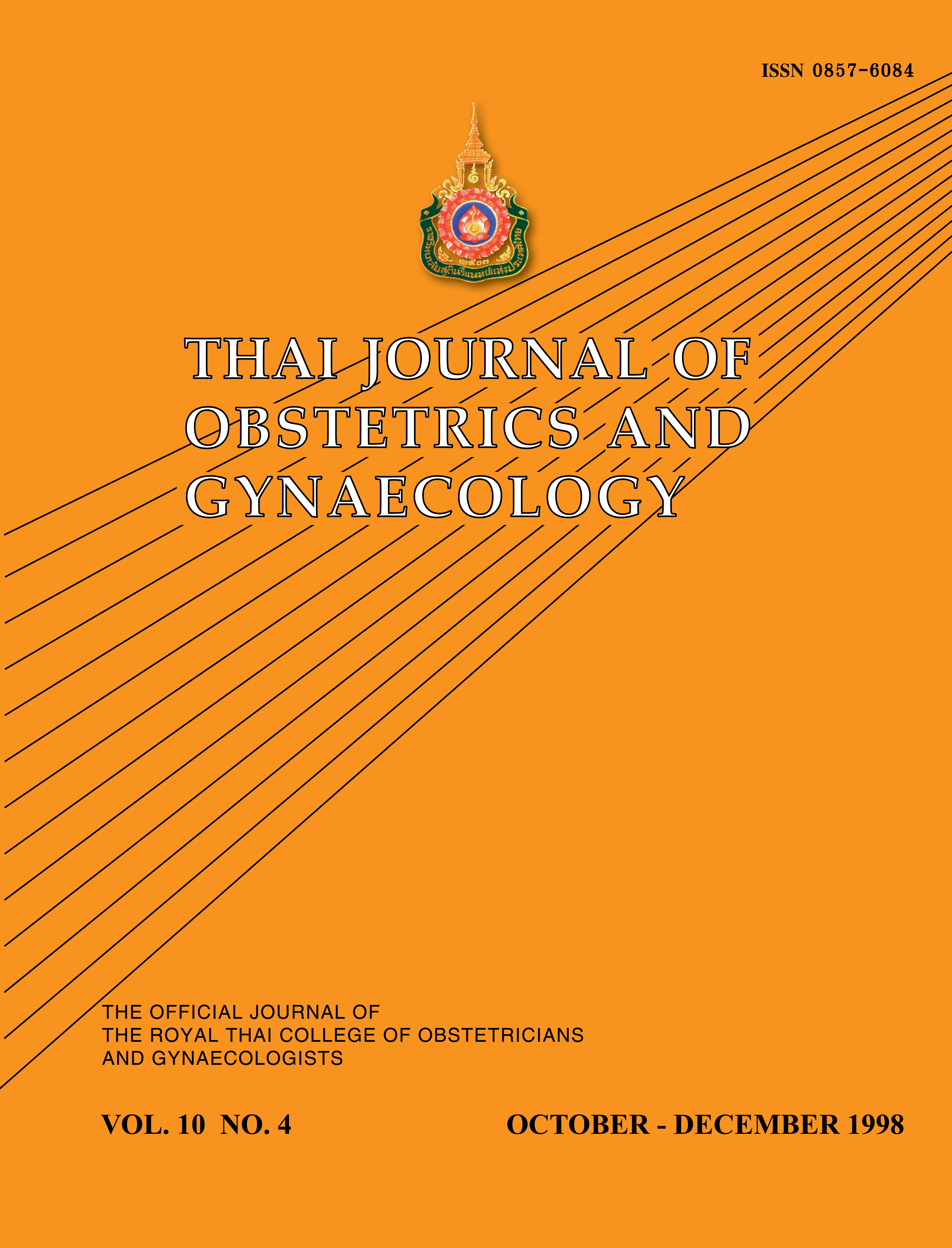Factors Associated with Bone Mineral Density in Women Attending Menopause Clinic at Hat Yai Regional Hospital
Main Article Content
Abstract
Objective To determine risk factors of osteoporotic and osteopenic women.
Main outcomes measures Bone mineral density (BMD) was measured at the lumbar spine and the femoral neck using dual photon absorptiometer (Lunar Expert-XL).
Results Overall, 19.3%, 83 in 430 of women were osteopenia (BMD < 1.0 to 2.5 SD), osteopenia at one skeletal site revealed in 76 of 83 cases (91.6%); among these, 70 of 83 cases (84.4%) were osteopenic lumbar spines, 6 of 83 (7.2%) were osteopenic femoral neck. Only 7 of 83 cases (8.4%) were osteopenic lumbar spines and femoral neck. 20 of 430 women (4.7%) were osteoporosis (BMD < 2.5 SD). Osteoporosis at one skeletal site occurred in 19 of 20 cases (95.0%); all of them were osteoporotic lumbar spines. Only 1 of 20 cases (5.0%) was osteoporotic lumbar spines and femoral neck. Osteopenia and osteoporosis in this study were not correlated with history of osteoporosis among members of family, non-hormone intake, insufficient calcium food, alcohol intake, coffee intake, smoking, or non-exercise. Low body mass index (BMI) was highly significant correlated with osteoporosis and osteopenia among post-menopausal women.
Conclusion The result of the study suggests that BMI is an important determinant of bone density in this population.
Article Details

This work is licensed under a Creative Commons Attribution-NonCommercial-NoDerivatives 4.0 International License.


